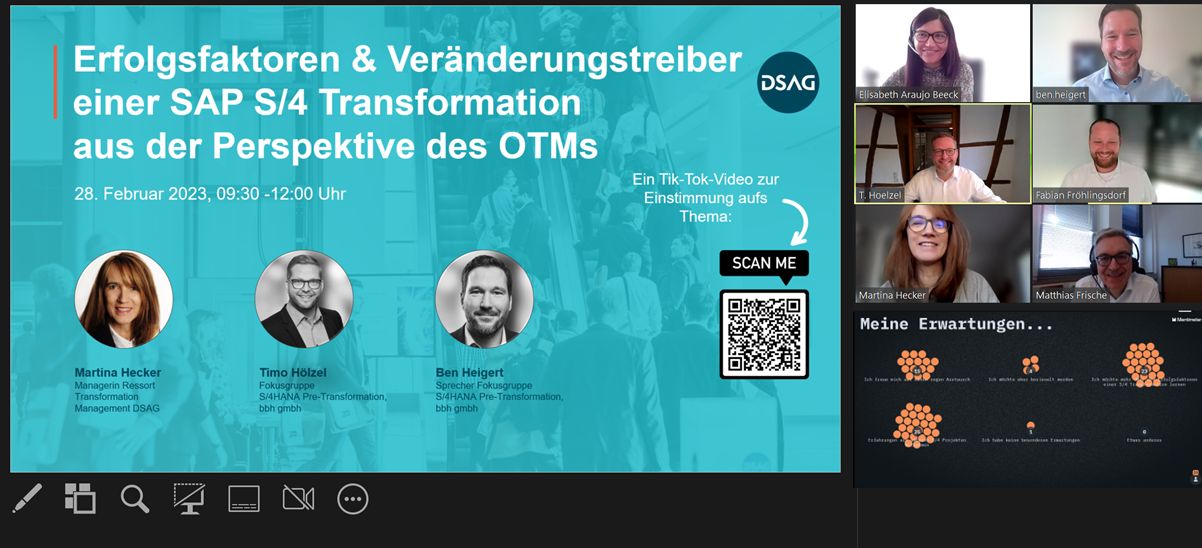Leadership in times of crisis – now your entire leadership repertoire is challenged!

Leadership is not an easy task in “normal” times, especially not in times of transformation, and certainly not in such unimaginable times as the current. Those who know us are aware that we always try to emphasize the positive and to recognize opportunities that arise from a critical situation. From a leadership and personality development point of view, we definitely see an opportunity here.
Crisis as an opportunity for leadership development
These times force (all of us) to get out of our comfort zones. As a manager (and as an employee as well) you can now decide whether you try to somehow transfer what you are accustomed to into your “home office” or into a state of crisis, or take the opportunity to find and make use of your potential. Why? It is not the ONE leadership style nor ONE or TWO management competencies that are currently important, but it is the constant balancing of different perspectives and approaches – one could say that the ‘leadership style of crisis’ must be a ‘constantly balancing’ leadership behavior, a conscious situational leadership:
- Recognizing both human needs as well as economic necessities
- Conveying both certainty as well as pressure to act
- Making both quick as well as carefully considered decisions
- Showing both optimism as well as the worst cases
Surely you can think of many “as-well-as” examples (Feel free to share your experiences or examples in the comments with us!)
‘As-well-as’ is key to success in terms of leadership behavior in crisis
Good news, and some encouragement from research: Every person with an intact brain has all biological prerequisites to meet all requirements in a balanced way, although they might be located in different brain regions. In the course of one’s life, one develops a preference for one or two of these different brain regions – and the result is what is usually known as ‘personality types’. Nevertheless, humans can (if we want to leave our usual behavioral patterns behind) use all systems (even those we activate sporadically) and thus meet ambiguous requirements… if we activate all of our systems, we develop our personality in terms of enlarging our behavioral repertoire. When the usually non-preferred brain systems are consciously activated, new synapses are formed in these areas due to brain plasticity, which gradually expand our behavioral repertoire (also for times of no crisis).
‘As-well-as’-leadership works by consciously controlling our mood
How does this work? Through the conscious control of emotions. Why? Because the different brain systems are each activated by a certain mood. Two short examples:
- Do you lose sight of the big picture? Fear of failure in crisis management? All you can see is the negative? You can only get out of these dead ends if you manage to put yourself in a positive and relaxed mood. Then it will be easier to recognize the big picture, opportunities and ideas. Do you know Happy Gilmore? He uses this mechanism whenever he remembers his ‘Happy Place’ before the stroke. The constant alternation between analyzing and solving individual problems and worst case scenarios and leaning back to be able to see and communicate the big picture is what you as a manager have to do in these times. With just a quick glance at the news, you immediately are in the ‘problem focus mood’. Make sure that you also have an optimistic view on the big picture from time to time – especially when you have to give your employees perspective and support. Think of your ‘Happy Place’ now and then.
- Implementing quick decisions and measures is currently more important than ever. There is talk about a race against time. However, if this brain system gains the upper hand, actionism, hamster purchases and rational panic will result (here is a current article on that topic: https://www.spiegel.de/netzwelt/netzpolitik/corona-gesellschaft-wider-die-vernunftpanik-kolumne-a-772e1651-f393-4bc6-8f79-79dc7a5ed025). Here, too, ‘as-well-as’-leadership is necessary: Of course, quick and sometimes unpleasant decisions and measures must be taken. But we constantly have to ask the question: Is this a good idea? For this critical perspective, we need a subdued mood that is neither euphoric nor anxious. This is about rational and abstract thinking. Write down your goals for yourself, your employees and your company in the coming weeks and consciously recall them when the hectic pace of everyday life turns into actionism and panic.
These little tricks for controlling emotions help to expand your repertoire of thinking, feeling and behavior. Through the ‘mood changes’, it is possible to show balanced thinking, feeling and behavior as a manager.
As a leader make sure influence your employees’ mood consciously
As a manager you also influence your employees’ thinking, feelings and behavior. Do this consciously in order to make working in a crisis (but also afterwards) as effective and pleasant as possible:
- Create a relaxed, calm, confident atmosphere when it comes to new ideas, solutions and the big picture
- Define the shared focus and goals for the coming weeks. Ask thoughtful but critical questions when people lose sight of the objectives and actionism gains the upper hand
- Create a critical mood if you want to point out problems or discover errors in concepts/data/facts with your employees
- Appeal to human needs and values (solidarity, fairness, charity) when commitment and the implementation of necessary measures are required
Be close to your employees and make sure that you have a clear picture of what concerns them
Last but not least (this almost being a platitude): It only succeeds if you are close to your employees despite physical distance. Always make sure that you have a clear picture of what moves your employees. Of course, this conscious mood management is not only helpful in such exceptional times as now, but also in the ‘normal’ everyday management routine or especially in the context of transformations. However, there is now an opportunity and a necessity to broaden one’s personal behavior repertoire and to use the current situation as an opportunity for personality development.
If you would like to read something different (instead of the Corona News ticker), here are two books as ‘further reading recommendation’, written by researchers who, by combining existing personality theories with neuroscientific findings, have established the connection between brain systems, motivation, emotions and behavior:
- The popular science version, which is easy to read and written in an entertaining way: Storch/Kuhl (2013): Die Kraft aus dem Selbst
- For those who like it rather ‘dry’, the corresponding scientific work: Kuhl/Strehlau (2009): Handlungspsychologische Grundlagen des Coaching: Anwendung der Theorie der Persönlichkeits-System-Interaktionen (PSI) // Kuhl et al. (2010): Persönlichkeit und Motivation im Unternehmen: Persönlichkeit und Motivation im Unternehmen: Anwendung der PSI-Theorie in Personalauswahl und -entwicklung






